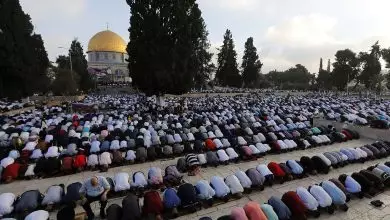Syrian Army Overpowers Jabhat Al-Nusra in West Aleppo: Entire Al-Zahra Quarter Captured

The Syrian Arab Army (SAA) – backed by the National Defense Forces (NDF), Kataebat Al-Ba’ath (Al-Ba’ath Battalions), and the predominately Palestinian pro-government militia “Liwaa Al-Quds” (Jerusalem Brigades) – have fought back against the Syrian Al-Qaeda group “Jabhat Al-Nusra” and their affiliates inside the Al-Zahra Association Quarter of western Aleppo, recovering all of the lost building blocks to the aforementioned Islamist factions on Tuesday evening.
For weeks, the Islamist rebels of Jabhat Al-Nusra, Jaysh Al-Mujahiddeen, Harakat Ahrar Al-Sham, and Harakat Nour Al-Deen Al-Zinki have wrecked havoc on the Syrian Arab Army’s positions in the eastern sector of the Al-Zahra Association Quarter; however, the Syrian Armed Forces finally struck back after another failed Al-Nusra assault on the dilapidated Air Force Intelligence building.
Launching their assault from the Air Force Intelligence building and Building 11 in the Al-Zahra Association Quarter, the Syrian Arab Army and their allies were able to recapture several building blocks that Jabhat Al-Nusra and their affiliates seized three weeks ago during their brief offensive; this left the Islamist rebels with their backs against the wall at the Great Prophet Mosque located on the western fringes of Al-Zahra.
Following their advance to the Great Prophet Mosque, the Syrian Armed Forces were able to impose full control over this large religious site that has now become a battleground between the two opposing sides.







